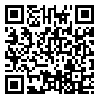Congenital dyserythropoietic anemia (CDA) is a rare disease globally. It is characterized by marked dyserythropoiesis as the name suggests. There are only a few hundred cases of Type- I CDA described sporadically. Here we are presenting two cases of CDA –I which were diagnosed based on a simple examination of bone marrow after ruling out common mimickers. One of our patients presented in the neonatal period while the other child presented at the age of six months. Bone marrow examination of both patients showed dyserythropoiesis, and binucleated erythroblasts with much of karyorrhexis. CDA- type II, paroxysmal nocturnal hemoglobinuria was ruled out among other diseases. Genetic tests could not be done. After diagnosis, both patients were put on lifelong blood transfusion therapy and subsequently on iron chelation for treating iron overload secondary to repeated transfusion. Genetic counseling was done in both cases and a bone marrow transplantation option was offered to both families but could not be done due to the non-availability of matched donors and financial constraints. Both patients are still on regular follow-up from our center and growing well. Our case report highlights the fact that this rare entity of congenital dyserythropoietic anemia can be reliably diagnosed even in a resource-poor setting using a simple investigation of bone marrow examination.
Received: 2021/03/23 | Accepted: 2023/08/24 | Published: 2024/01/20
| Rights and permissions | |
 |
This work is licensed under a Creative Commons Attribution-NonCommercial 4.0 International License. |




